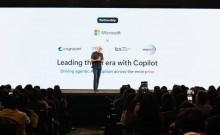YouTube has announced that it would open itself up to external entities that would verify or measure its advertising for viewer impact.
Among the vendors approved by YouYube are comScore, DoubleVerify, Integral AdScience and Moat. The latter will begin measurement first, early next year.
'Viewability verification' refers to measurement of how ads are being used or where they are being placed. Viewability is a measure of whether or not an ad had a chance to be seen by a user. Marketeers want to know how and when their ads are being viewed and want metrics around the actual number of times an ad appeared in front of a user.
Google had created the Active View solution two years ago which enabled advertisers to buy ads on a "viewable" rather than a "served-impression" basis.
Though YouTube, which was bought up by Google in 2006, has now opened up to outside measurement vendors, advertisers will still be able to use Active View.
"Advertisers will still be able to use Active View as anticipated. Having Google as partners helps in addressing challenges. It pushes the entire industry forward. This move will generate better industry standards across third party verification practices. It will keep the momentum in the right direction," said Keith Weed, Chief marketing and communications officer of Unilever, was quoted as saying in marketingland.com.
Companies like Unilever have been advocating third-party viewability verification. Weed was quoted by Facebook in September that it would begin offering third-party viewability verification on video ads. "Viewability verification would extend beyond ads on the social media," Facebook said, having tied with Moat for the same.
Recently, advertisement networks Millennial Media and 33Across announced a partnership with Integral Ad Science to offer viewability verification and to guarantee that advertisers only paid for ad impressions that were seen by the viewers and not otherwise, marketingland. com said.

















![Limited edition Phone (3a) launched in India; what's special about it [read now]](https://data1.ibtimes.co.in/en/full/825642/limited-edition-phone-3a-launched-india-whats-special-about-it-read-now.png?w=220&h=135)